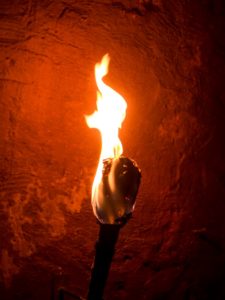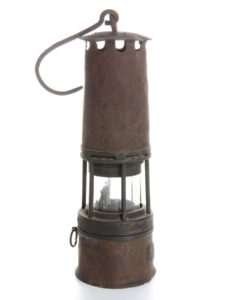Gas leak detectors use sensors to identify potentially dangerous substances that you can’t see or smell. Today, there are a multitude of sensor technologies available for commercial use that can easily and quickly detect harmful gases in the air, but this wasn’t always the case. The history of gas leak detection is full of fascinating stories about the different ways people used to discover whether an area was filled with toxic gas or other substances. Keep reading to find out more.

In the Beginning
The first methods for gas detection were used by coal miners in the 19th and early 20th centuries during the Industrial Revolution. At first, they enlisted a person to wear a wet blanket and carry a wick with the end lit on fire. They would move the lit wick along the walls of the mine, and if there was a pocket of methane gas, the wick would ignite. The damp blanket kept the tester safe most of the time. However, sometimes large pockets of methane caused the entire area to be engulfed in flames. When the mining industry realized that using humans as a portable gas leak detector was too dangerous, they sought other methods.
The next method involved canaries. Canaries were chosen because the part of their nervous system that controls breathing closely resembles that of humans. Canaries are also known for having a loud, melodious chirp. Miners would bring canaries in bird cages with them into the mine tunnels. They would check on the songbirds regularly. When a canary started shaking their cages or stopped singing, this signaled to minors that methane was present and they needed to evacuate the area immediately.
The Rise of the Safety Light
The first type of portable gas detection equipment, the flame safety lamp, was invented by Sir Humphrey Davy in 1815. The lamp had an oil flame that could be adjusted to certain heights to freshen up the air. The flame was contained in a wire gauze sleeve. The wire gauze sleeve encapsulated the flame and absorbed heat. This prevented the heat from the flame igniting the methane because it couldn’t propagate through the wire gauze to continue combustion.
Miners would always start the flame in the middle of an area where fresh air was abundant. If the flame lowered or was starting to die out, miners knew the area lacked oxygen, since fire needs oxygen to stay alive. If the flame went higher, they knew the area contained both methane and oxygen because methane is highly reactive with oxygen. Many industries around the U.S. still use gas lamps to ensure the safety of their work environments today.
Modern Technologies Take Over

The modern era of gas detection began with the creation of the catalytic sensor by Dr. Oliver Johnson in 1926. The sensor could detect a mixture of combustible elements in the air to prevent explosions in fuel storage tanks. The first gas detection company, Johnson-Williams Instruments, was founded in Palo Alto, CA, in 1928. The company championed many innovations in gas detection, including a portable oxygen detector and an instrument that detected vapors, gases, and oxygen simultaneously.
The first portable gas detection monitor used an analytic valve that measured the amount of methane in the atmosphere. Detection of methane was achieved via a catalytic diffusion sensor that would burn the gas inside. Today, portable gas detectors are made to detect carbon monoxide and a host of other dangerous gases, and often use batteries that allow devices to run longer than before. Contact DOD Technologies, Inc. if you want to know more about the latest commercial gas detectors.







